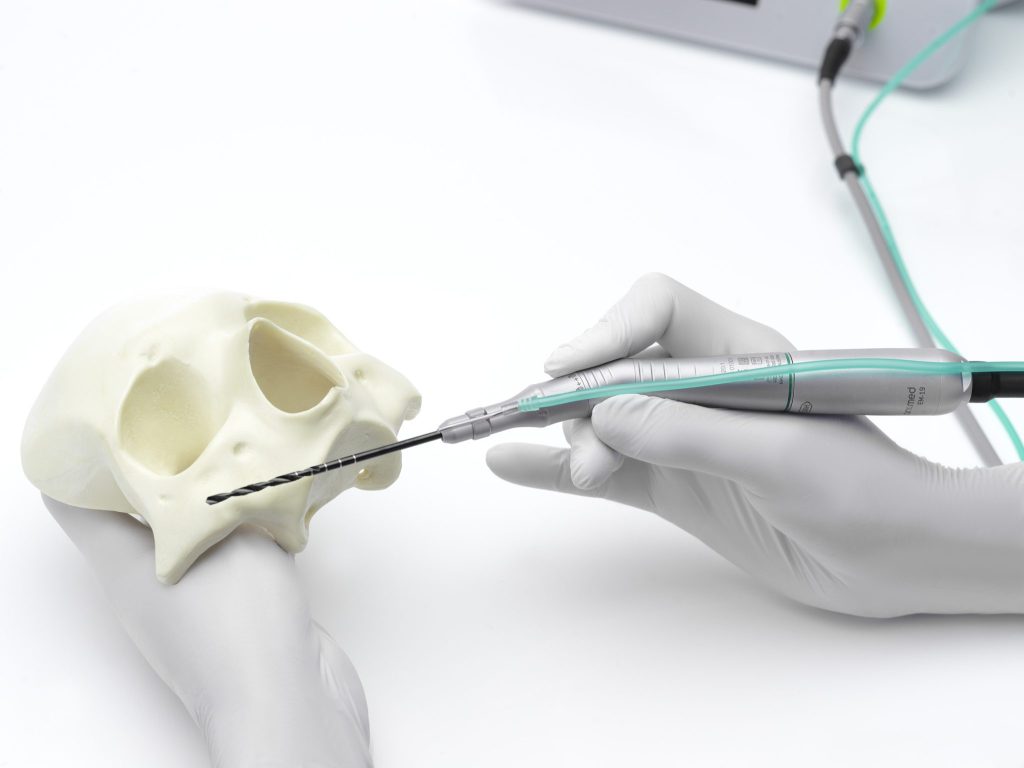Zygomatic implants – what are the benefits?
Featured Products Promotional FeaturesPosted by: Dental Design 28th October 2022

Even when you have learned the skills to perform dental implant surgery, there are numerous scenarios where traditional implant systems may not be a feasible option.
In these cases, zygomatic implants can often be a suitable choice for upper arch restoration, especially as they offer certain benefits that traditional implant systems can’t provide.
So, if you’re considering introducing zygomatic implants into your treatment portfolio, here are some of the advantages, complications and things you need to consider:
A predictable, less invasive procedure
Dental implant treatment can be a daunting prospect for patients. Although it has come on leaps and bounds in recent years, it still requires invasive surgery that tends to entail a significant healing period. Plus, even if the procedure itself is successful, further complications can occur in regards to aesthetics or function.
Zygomatic implants offer good peace of mind, with high success rates. In fact, a systematic review that averaged success rates across 25 different studies found survival rates of 97.86% after 36 months.[i] These success rates don’t diminish over time either, and follow up studies that assessed zygomatic implants over a 12-year period found cumulative survival rates to be at 96.7%.[ii]
Due to their length and placement into the zygomatic bone, this style of dental implant eliminates the need for some of the more invasive treatment steps associated with conventional techniques and implant systems, including bone augmentation. As professionals are well aware, bone grafting isn’t always successful and can lead to further complications. As such, being able to avoid this stage is a huge advantage, especially if you want to ensure that treatment is predictable for your patients.
This feature also means that zygomatic implants are a suitable option for cases where there has been significant bone loss or resorption in the upper arch or where the bone quality isn’t good enough to support traditional implants. This means that by providing zygomatic implants you can widen the patient pool you are able to provide treatment for, making it so cases of inadequate or poor-quality bone needn’t be referred elsewhere or undergo significant bone grafting.
Rehabilitation made easy
As zygomatic implants avoid the need for bone grafting, often it means that patients can undergo a one-stage procedure. These implants can often be immediately loaded, instantly restoring the patient’s quality of life and giving them an aesthetic, comfortable and long-lasting solution with minimal distress.
Healing times for zygomatic implants tend to be shorter than traditional implants as they require less surgical steps. With the avoidance of bone grafting and the fact that zygomatic implants are designed to provide more strength than traditional implants, patients don’t have to experience long healing sessions between each stage of treatment.
Possible complications
No dental implant surgery is without risk, and there are certain issues that can occur with zygomatic implants both during placement and over time.
During surgery, there is a risk of zygomatic bone fracture if the implants put too much pressure on the bone when they are placed. Additionally, further surgical complications include incorrect implant trajectory after placement, and damage to the implant itself during placement. These issues can usually be avoided through detailed treatment planning and the use of technology that is designed specifically for this type of surgery.[iii]
 Following placement and even after the healing phase, zygomatic implants may result in the formation of sinusitis. This issue may not occur for some years, and can usually be rectified with simple medical care. However, these implants may also lead to the formation of oroantral fistulas, sensory nerve defects, intraoral soft tissue problems and more issues – all of which require specific treatment and care to overcome and some of which could potentially cause implant failure in the long-term.[iv] We also can’t forget that zygomatic implants, much like traditional implants, may lead to peri-implantitis, which can also cause complete implant failure over time.
Following placement and even after the healing phase, zygomatic implants may result in the formation of sinusitis. This issue may not occur for some years, and can usually be rectified with simple medical care. However, these implants may also lead to the formation of oroantral fistulas, sensory nerve defects, intraoral soft tissue problems and more issues – all of which require specific treatment and care to overcome and some of which could potentially cause implant failure in the long-term.[iv] We also can’t forget that zygomatic implants, much like traditional implants, may lead to peri-implantitis, which can also cause complete implant failure over time.
Depending on placement of these implants and the fit of the final prosthesis, there is the opportunity for oral hygiene issues to occur as well, especially if the patient is unable to clean around the implants and the soft tissues effectively.
Facilitating success
Zygomatic implants require a high level of clinical skill and knowledge, but professionals can support their skills with technology that has been designed to facilitate the surgical process.
The SZ-75 Surgical Handpiece from W&H has been specifically created to aid placement of zygomatic implants. Unique angulation allows better visibility at the treatment site, while the ergonomic design helps support fatigue-free working. Plus, its efficient cooling system helps ensure that it won’t overheat, giving you complete control.
An option worth exploring
Although traditional dental implants perform well in most clinical scenarios, zygomatic implants are a trusted alternative for upper arch rehabilitation in the severely atrophic maxilla. Ensure you are aware of both the benefits and risks and have the equipment you need to safely deliver this type of treatment for your patients.

To find out more visit www.wh.com/en_uk, call 01727 874990 or email office.uk@wh.com
[i] Tzerbos, F. et al. Complications of Zygomatic Implants: Our Clinical Experience with 4 Cases. Acta Stomatol Croat. 2016 Sep; 50(3): 251–257.
[ii] Tzerbos, F. et al. Complications of Zygomatic Implants: Our Clinical Experience with 4 Cases. Acta Stomatol Croat. 2016 Sep; 50(3): 251–257.
[iii] Nunes, M. et al. Complications Related to Zygomatic Implants. Nunes, Mariana & De Araújo Nobre, Miguel & Veiga, Vítor & Maló, Paulo. (2016).
[iv] Tzerbos, F. et al. Complications of Zygomatic Implants: Our Clinical Experience with 4 Cases. Acta Stomatol Croat. 2016 Sep; 50(3): 251–257.








